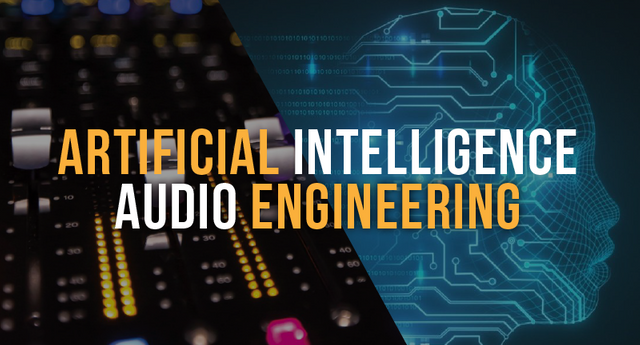From Mixing Boards to Machine Learning: My Journey into AI-Driven Audio Engineering
- Raviraj Panchal

- Jul 30
- 4 min read

As someone deeply passionate about sound, I’ve always been drawn to the art and science behind audio engineering. There’s something magical about shaping frequencies, dialing in a mix, and restoring clarity to recordings. Whether I’m experimenting with plugins or learning new techniques, audio has always been my creative playground.
But recently, that playground expanded.
I’ve started diving into the world of Artificial Intelligence, especially as I prepare to pursue a Masters in Artificial Intelligence & Machine Learning. And let me tell you—what AI is doing in the audio engineering space is honestly blowing my mind. It’s not just cool tech—it’s transforming how we create, edit, and experience sound.
Here’s what I’ve discovered so far on this journey.
Automated Mixing and Mastering – A Game-Changer
One of the first things that blew my mind was how far AI has come in mixing and mastering. I used to think these processes had to be done by trained professionals with expensive gear—and while that’s still true for top-tier productions, AI tools are closing the gap fast.
Tools like LANDR landr.com , iZotope Ozone izotope.com , and CloudBounce analyze your track and apply intelligent EQ, compression, and spatial effects. I uploaded a raw track to test this out and within minutes, it came back sounding polished and loudness-balanced—without me touching a single fader.
It's not about replacing engineers. It’s about giving creators like me access to high-quality results, even when working solo.
Noise Reduction and Audio Cleanup with Just One Click
This one genuinely felt like magic. Anyone who’s ever recorded vocals in a less-than-perfect space knows the pain of dealing with background noise, hums, or reverb.
I tried iZotope RX and Adobe Enhance Speech podcast.adobe.com tools that clean up audio with remarkable precision. I ran a noisy field recording through RX, and it isolated the voice from the ambient noise like a pro. What used to take hours of manual EQ and denoising now takes seconds.
These tools aren’t just time-savers—they make high-quality production accessible to podcasters, filmmakers, and musicians working with limited resources.
AI-Generated Voices and Music – Creepy... but Cool
Here’s where things get surreal.
I experimented with voice synthesis tools like Descript’s Overdub descript.com , ElevenLabs elevenlabs.io , and the results were almost indistinguishable from human speech. You can type out a script, and the AI reads it in your voice—or any voice you train it with. It’s perfect for replacing missed lines or doing voiceovers on the fly.
And when it comes to music generation, AI platforms like AIVA aiva.ai , Amper, and Magenta Studio magenta.withgoogle.com can generate melodies or entire compositions. I gave them a genre and a few parameters, and they delivered ready-to-use musical ideas. While it’s not quite replacing human emotion, it’s a powerful tool for inspiration or quick content creation.
Source Separation and Stems on Demand
This one’s a DJ and remixer’s dream.
I uploaded a full track into Moises.ai , and it instantly separated vocals, drums, bass, and other instruments into individual stems. Just a few years ago, this was only possible with access to the original session files. Now, I can isolate vocals for a remix or extract the drums to study how a beat was built.
For educators, remix artists, and even karaoke enthusiasts, this is incredibly useful.
Live Sound That Adjusts Itself
As someone who’s dabbled in live sound mixing, I know how chaotic it can get—especially when feedback or level mismatches creep in. That’s why I was impressed by the latest AI-driven digital mixers from brands like Yamaha and Allen & Heath.
These systems can detect feedback frequencies and suppress them automatically, adjust input gains, and balance levels in real-time. It’s like having a smart assistant constantly optimizing the mix during a show.
More Accessible Audio for Everyone
Something that really stood out to me is how AI is improving accessibility. I tested AI captioning tools like Whisper openai.com/index/whisper (by OpenAI) and found they transcribe audio in real-time with impressive accuracy. Plus, apps like Nura nurasound.com and Audeara us.audeara.com personalize playback based on your hearing profile, creating a custom audio experience.
This isn’t just cool—it’s meaningful. AI is helping more people experience and interact with sound in ways that were previously out of reach.
Some Big Questions We Need to Ask
As exciting as all of this is, I’ve started thinking more critically about the implications. If AI can mix, master, and even create music, where does that leave human engineers and artists? Are we heading toward a future where authenticity becomes blurred?
There’s also the legal gray area—who owns an AI-generated track? Can I remix a song using stems extracted by AI without violating copyright?
These are questions I don’t have all the answers to yet, but they’re worth asking.
Final Thoughts: It's Not Replacing Us—It’s Empowering Us
What this journey has really shown me is that AI isn’t some threat to creativity—it’s more like a new tool that expands what we’re capable of. It’s not here to replace audio engineers or artists, but to support us by handling the boring, repetitive stuff—so we can focus more on the things that truly matter: the emotion, the storytelling, the creative spark.
I’ll always believe there’s something special about the human touch in sound. But now, with AI in my workflow, I feel like I have more space to experiment, to try new ideas, and to just create without getting stuck in the technical weeds.
At the end of the day, that’s what audio engineering has always been for me—curiosity, creativity, and connection. And with AI by my side, that experience feels more exciting than ever.





Comments